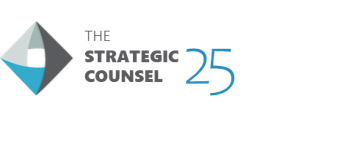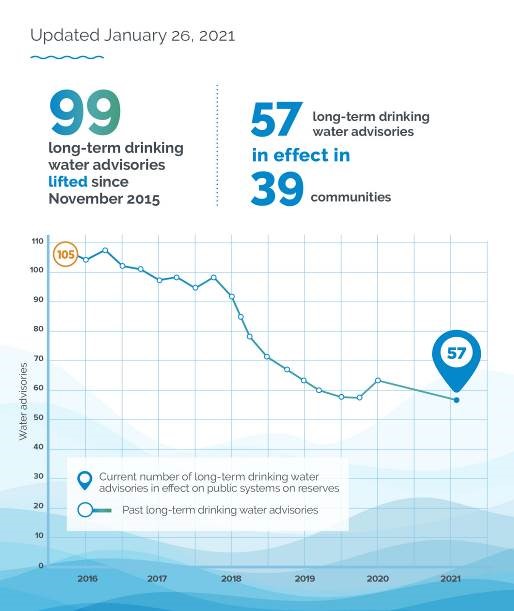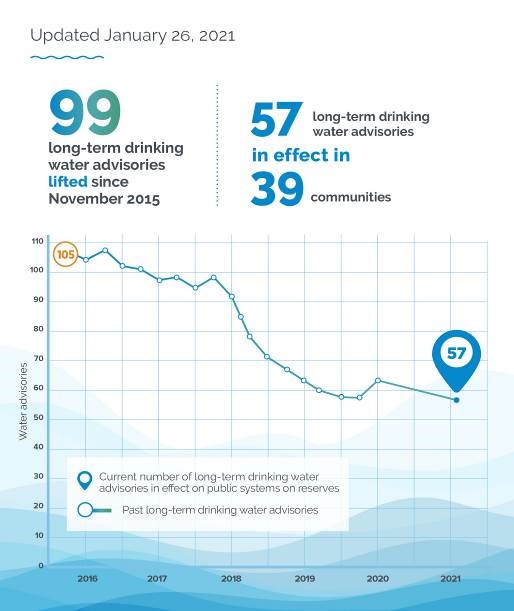



Target audience
| LOCATION | GROUP | LANGUAGE | DATE | TIME (EST) | GROUP COMPOSITION | NUMBER OF PARTICIPANTS |
|---|---|---|---|---|---|---|
| Greater Vancouver Area (GVA) | 1 | English | Feb. 2 | 9:00-11:00 pm | Parents with children in daycare and/or considering daycare within next 12 months | 8 |
| Mid-size and Major Centres Quebec | 2 | French | Feb. 3 | 6:00-8:00 pm | Vaccine Hesitant | 6 |
| Alberta | 3 | English | Feb. 4 | 8:00-10:00 pm | Vaccine Hesitant | 6 |
| Manitoba | 4 | English | Feb. 9 | 7:00-9:00 pm | EI/Recovery benefits Recipients | 7 |
| Quebec | 5 | English | Feb. 10 | 6:00-8:00 pm | Indigenous People | 6 |
| Hamilton-Niagara Region Ontario | 6 | English | Feb. 11 | 6:00-8:00 pm | Young Adults (aged 18-30) | 8 |
| Smaller/Rural Centres Ontario | 7 | English | Feb. 16 | 6:00-8:00 pm | General Population | 8 |
| Saskatoon and Regina | 8 | English | Feb. 17 | 7:00-9:00 pm | Parents of School Age Children (JK-grade 12) | 7 |
| Major Centres B.C. | 9 | English | Feb. 18 | 9:00-11:00 pm | People experiencing COVID fatigue/Exhibiting riskier behaviours | 7 |
| Greater Montreal Area (GMA) | 10 | French | Feb. 22 | 6:00-8:00 pm | General Population | 6 |
| Kitchener through to SW Ontario | 11 | English | Feb. 23 | 6:00-8:00 pm | People experiencing COVID fatigue/Exhibiting riskier behaviours | 8 |
| Major Centres Atlantic Canada | 12 | English | Feb. 25 | 5:00-7:00 pm | General Population | 8 |
| Total number of participants | 85 | |||||

The figure above has a thin, white banner at the top with the Government of Canada wordmark in the top right corner and the Government of Canada signature in the top left corner. Below, there is a thin turquoise line, and underneath the line, on the left-hand most side there is the COVID Alert App icon, to the right of which, in large font text reads ‘COVID Alert’ and under, in slightly smaller black font reads ‘Scan a place. Slow the spread.’ On the right-hand side, black text reads the French translation of ‘Alerte COVID’ and ‘Scannez un lieu. Freinez la propagation du virus.’ in the same font style and layout as was written in English. Below this text, there is a backdrop of alternating turquoise and white diagonal stripes. In the middle of this matter, there is a QR code with a turquoise border. Below the QR code, black font reads ‘Location Name’ and below in slightly smaller text, ‘Address, Street, City, Province, Postal Code.’ Below the turquoise and white diagonal stripes, on the left-hand most side, there is a hand holding a cellphone that is showing a QR code. Next to this image, black font reads ‘Open the COVID Alert app. Then tap Scan a place. canada.ca/covid-alert.’ Where the words ‘Scan a place’ are underlined. To the right of this text, in the same font style, the French translation reads ‘Ouvrez l’appli Alerte COVID. Appuyez sur Scanner un lieu. canada.ca-alerte-covid.’

The figure above has the COVID Alert App icon in the top left corner, to the right of which, in large font text reads ‘COVID Alert’ and under, in slightly smaller font, black font reads ‘Help make contact tracing easier.’ On the right-hand side in the top right corner, black text reads the French translation of ‘Alerte COVID’ and ‘Facilitez la recherché de contacts.’ in the same font style and layout as was written in English. Below this text, there is a backdrop of alternating orange and white diagonal stripes in between two bolded orange lines. In the middle of this matter, there is a QR code with an orange border. To the right of the QR code, black font reads ‘Location Name’ and below in slightly smaller text, ‘Address, Street, City, Province, Postal Code’. Below these alternating orange and white stripes, on the left-hand most side, there is a hand holding a cellphone that is showing a QR code. Next to this image, black font reads ‘Open the COVID Alert app. Then tap Scan a place. canada.ca/covid-alert.’ Where the words ‘Scan a place’ are bolded. To the right of this text, in the same font style, the French translation reads ‘Ouvrez l’appli Alerte COVID. Appuyez sur Scanner un lieu. canada.ca-alerte-covid.’ Below this, there is a white banner with the Government of Canada wordmark in the bottom right hand corner and the Government of Canada signature in the bottom left hand corner.

The figure above has the COVID Alert App icon in the top left corner, to the right of which, in large font text reads ‘COVID Alert’ and under, in slightly smaller font, black font reads ‘Check in to get exposure notifications.’ On the right-hand side, black text reads the French translation of ‘Alerte COVID’ and ‘Enregistrez votre visite pour recevoir des notifications d’exposition.’ in the same font style and layout as was written in English. Below this text, there is a backdrop of alternating purple and white diagonal stripes in between two bolded purple lines. In the middle of this matter, there is a QR code with a purple border. To the right of the QR code, black font reads ‘Location Name’ and below in slightly smaller text, ‘Address, Street, City, Province, Postal Code’. Below these purple and white stripes, on the left-hand most side, there is a hand holding a cellphone that is showing a QR code. Next to this image, black font reads ‘Open the COVID Alert app. Then tap Scan a place. canada.ca/covid-alert.’ Where the words ‘Scan a place’ are underlined and bolded. To the right of this text, in the same font style, the French translation reads ‘Ouvrez l’appli Alerte COVID. Appuyez sur Scanner un lieu. canada.ca-alerte-covid.’ Below this, there is a white banner with the Government of Canada wordmark in the bottom right hand corner and the Government of Canada signature in the bottom left hand corner.
The ad begins by showing the side profile of a man standing in the bathroom, shaving his face. The camera then focuses on the man, straight on, where the man has only shaved one half of his face. The next scene depicts a woman bringing a young girl a bowl with some uncooked spaghetti noodles laying across the top with tomato sauce in the middle. The young girl then picks up a few uncooked noodles, looking confused. The next scene depicts a man leaving his house, where he is wearing a full suit on top, but only underwear on his bottom. The camera then depicts a neighbour lady drinking coffee, looking confused at the man leaving his house who is only half-dressed. The next scene depicts two people at a bus stop. The man is wearing a mask, but the mask is only covering his mouth and chin, not his nose. The woman standing next to him points to her own mask, which is covering both her mouth and nose. The man looks startled and then fixes his mask over his mouth and nose. Narration for this scene says ‘There’s some things you just don’t do halfway. Fighting COVID-19 is one of them. As vaccines rollout, let’s keep giving this our all.’ Next, a blue backdrop appears with large text reading ‘Follow public health measures and download the COVID Alert app.’ Above this text, there are four icons, the first shows 2 people with an arrow in between them, the next is a set of hands with a water drop mark above them, the next is an image of a face mask, and the final is the COVID Alert app logo. The narration says ‘Continue to follow public health measures. A message from the Government of Canada.’ The ad ends on a black screen with the Government of Canada wordmark in the middle. Throughout the ad is a string ensemble and piano playing suspenseful music.
This ad is the same as version 1. The only difference is the music. The music throughout the ad is an upbeat strumming banjo.

This infographic features a white background with a graphic of blue waves across the bottom third of the page. On the top left, the version date “Updated January 26, 2021” in written grey font underlined by a dark blue waved line. In the middle of the infographic to the left, text reads, “99 long-term drinking water advisories lifted since November 2015” in font that fades from blue to green, with the number “99” in much larger font than the other font, and the word “lifted’” in blue font. In the middle of the infographic to the right, text reads “57 long-term drinking water advisories in effect in 39 communities” where the numbers are in larger font, and the words “in effect in” is written in blue text. At the bottom of the infographic, there is a large chart, along the vertical axis there is water advisories (ranging from 0 to 110), and the horizontal axis is years (ranging from 2016 to 2021). In the graph, a blue line tracks downwards, from left to right. The top left of the graph line is the number 105 in an orange circle. The bottom right of the graph has the number 57 in a blue pinpoint icon. In the bottom left hand side of the graph, a legend depicts that the blue pinpoint icon is “current number of long-term drinking water advisories in effect on public systems on reserves.” Below, the legend depicts that each point on the graph line is “past long-term drinking water advisories.”
| GROUP | DATE | TIME (EST) | TIME (LOCAL) | LOCATION | COMPOSITION | MODERATOR |
|---|---|---|---|---|---|---|
| 1 | Tues., Feb. 2 | 9:00-11:00 | 6:00-8:00 (PST) | Greater Vancouver Area - B.C. | Parents with children in daycare and/or considering daycare within next 12 months | DN |
| 3 | Thurs., Feb. 4 | 8:00-10:00 | 6:00-8:00 (MST) | Alberta | Vaccine Hesitant | TBW |
| 4 | Tues., Feb. 9 | 7:00-9:00 | 6:00-8:00 (CST) | Manitoba | EI/Recovery Benefit Recipients | DN |
| 5 | Wed., Feb. 10 | 6:00-8:00 | 6:00-8:00 (MST) | Quebec | Indigenous Peoples | MP |
| 6 | Thurs., Feb. 11 | 6:00-8:00 | 6:00-8:00 (EST) | Hamilton-Niagara Region – Ontario | Young Adults, aged 18-30 | DN |
| 7 | Tues., Feb 16 | 6:00-8:00 | 6:00-8:00 (EST) | Smaller/Rural Centres – Ontario | General Population | DN |
| 8 | Wed., Feb. 17 | 7:00-9:00 | 6:00-8:00 (CST) | Saskatoon and Regina – Saskatchewan | Parents of School Aged Children, JK – Gr. 12 | TBW |
| 9 | Thurs., Feb. 18 | 9:00-11:00 | 6:00-8:00 (PST) | Major Centres B.C. | People Experiencing COVID Fatigue/Exhibiting Riskier Behaviours, All Ages | TBW |
| 11 | Tues., Feb. 23 | 6:00-8:00 | 6:00-8:00 (EST) | Kitchener through to SW Ontario | People Experiencing COVID Fatigue/Exhibiting Riskier Behaviours, All Ages | TBW |
| 12 | Thurs., Feb. 25 | 5:00-7:00 | 6:00-8:00 (AST) 6:30-8:30 (NST) | Major Centres – Atlantic Canada | General Population | DN |
| LOCATION | CITIES | |
|---|---|---|
| Greater Vancouver Area | Cities could include (but are not limited to): Vancouver, West and North Vancouver, Surrey, Burnaby, Richmond, Coquitlam, Port Coquitlam, Delta, Maple Ridge, New Westminster, Pitt Meadows, Port Moody, Langley, Maple Ridge, White Rock ENSURE A GOOD MIX OF CITIES ACROSS THE REGION. NO MORE THAN TWO PER CITY. |
CONTINUE - GROUP 1 |
| Alberta | Cities could include (but are not limited to): Calgary, Edmonton, Red Deer, Lethbridge, Fort McMurray, Medicine Hat, Grand Prairie, Lloydminster, Leduc, Cochrane, Fort Saskatchewan, Chestermere, Camrose, Beaumont, Stony Plain, Sylvan Lake, Brooks, Strathmore, High River ENSURE A GOOD MIX OF CITIES ACROSS THE REGION. NO MORE THAN TWO PER CITY. |
CONTINUE - GROUP 3 |
| Manitoba | Cities could include (but are not limited to): Winnipeg, Brandon, Steinbach, Winkler, Portage la Prairie, Thompson, Selkirk, Morden, Dauphin, The Pas, Flin Flon , Stonewall
ENSURE A GOOD MIX OF CITIES ACROSS THE REGION. NO MORE THAN TWO PER CITY. |
CONTINUE - GROUP 4 |
| Quebec | Cities could include (but are not limited to): Montreal, Quebec City, Saguenay, Sept-Îles, Val-d’Or, Sherbrooke, Trois-Rivières, Dolbeau-Mistassini, Alma, Baie-Comeau ENSURE A GOOD MIX OF CITIES ACROSS THE REGION. NO MORE THAN TWO PER CITY. |
CONTINUE GROUP 5 |
| Hamilton-Niagara Region – Ontario | Cities include (but are not limited to): Hamilton, St. Catherines, Niagara Falls, Welland, Fort Erie, Grimsby, Lincoln, Thorold, Port Colborne, Niagara on the Lake, Pelham
ENSURE A GOOD MIX OF CITIES ACROSS THE REGION. NO MORE THAN TWO PER CITY. |
CONTINUE - GROUP 6 |
| Smaller/Rural Centres – Ontario | <50k in population
Cities could include (but are not limited to): Cornwall, Chatham, Georgetown, St. Thomas, Woodstock, Bowmanville, Leamington, Stouffville, Orillia, Stratford, Orangeville, Bradford, Timmins, Bolton, Midland, Innisfil, Owen Sound, Brockville, Fergus, Lindsay, Collingwood
ENSURE A GOOD MIX OF CITIES ACROSS THE REGION. NO MORE THAN TWO PER CITY. |
CONTINUE - GROUP 7 |
| Saskatoon and Regina – Saskatoon | Saskatoon and Regina PARTICIPANTS SHOULD RESIDE IN THE ABOVE-NOTED CENTERS PROPER. 4 PARTICIPANTS FROM EACH CITY. |
CONTINUE - GROUP 8 |
| Major Centres B.C. | Cities include: Vancouver, Surrey, Burnaby, Richmond, Abbotsford, Coquitlam, Kelowna, Delta, Nanaimo, Kamloops, Victoria.
PARTICIPANTS SHOULD RESIDE IN THE ABOVE-NOTED CENTERS PROPER. MAXIMUM OF FOUR FROM THE LOWER MAINLAND. NO MORE THAN TWO PER CITY. |
CONTINUE - GROUP 9 |
| Kitchener through to SW Ontario | Cities include (but are not limited to): Kitchener, Waterloo, London, Windsor, Sarnia, Chatham-Kent, St. Thomas, Woodstock, Leamington, Stratford
ENSURE A GOOD MIX OF CITIES ACROSS THE REGION. NO MORE THAN TWO PER CITY. |
CONTINUE - GROUP 11 |
| Major Centres – Atlantic Canada | Cities could include (but are not limited to): NS: Halifax, Cape Breton NB: Moncton, Saint John, Fredericton, Dieppe, Miramichi, Edmundston PEI: Charlottetown, Summerside N&L: St. John’s, Conception Bay, Mount Pearl, Corner Brook ENSURE A GOOD MIX OF CITIES ACROSS EACH OF THE FOUR PROVINCES. |
CONTINUE - GROUP 12 |
| Other | THANK AND END | |
| VOLUNTEERED Prefer not to answer | - | THANK AND END |
| Less than two years | THANK AND END |
|---|---|
| Two years or more | CONTINUE |
| Don’t know/Prefer not to answer | THANK AND END |
| Child | Grade |
|---|---|
| 1 | |
| 2 | |
| 3 | |
| 4 | |
| 5 |
| Yes | CONTINUE ENSURE A GOOD MIX OF DIFFERENT INDIGENOUS GROUPS. |
|---|---|
| No | THANK AND END |
| Don’t know/Prefer not to answer |
| Under 18 years of age | IF POSSIBLE, ASK FOR SOMEONE OVER 18 AND REINTRODUCE. OTHERWISE THANK AND END. |
|---|---|
| 18-24 | IF HAMILTON-NIAGARA REGION = GROUP 6 ALL OTHER LOCATIONS, CONTINUE |
| 25-34 | |
| 31-44 | IF HAMILTON-NIAGARA REGION = THANK AND END ALL OTHER LOCATIONS, CONTINUE |
| 45-54 | |
| 55+ | |
| VOLUNTEERED Prefer not to answer | THANK AND END |
| Male | CONTINUE |
|---|---|
| Female | CONTINUE |
| GROUPE | DATE | HEURE (DE L’EST) | LIEU | COMPOSITION DU GROUPE | MODÉRATEUR |
|---|---|---|---|---|---|
| 2 | 3 février | 18 h-20 h | Grandes villes et villes de taille moyenne du Québec | Personnes qui hésiteraient à se faire vacciner | M. Proulx |
| 10 | 22 février | 18 h-20 h | Grande région de Montréal – y compris Montréal même | Population générale | M. Proulx |
| LIEU | VILLES | |
|---|---|---|
| Grandes villes et villes de taille moyenne du Québec | Ces villes peuvent notamment comprendre : Pour les grandes villes : Montréal, Gatineau, Québec, Sherbrooke, Trois-Rivières, Chicoutimi – Jonquière Pour les villes de taille moyenne : Saint-Jean-sur-Richelieu, Saint-Jérôme, Chateauguay, Drummondville, Granby, Beloeil, Saint-Hyacinthe ASSURER UNE BONNE REPRÉSENTATION DES VILLES DE LA RÉGION. PAS PLUS DE DEUX PARTICIPANTS PAR VILLE. RECRUTER QUATRE PERSONNES POUR LES GRANDES VILLES ET QUATRE PERSONNES POUR LES VILLES DE TAILLE MOYENNE. |
CONTINUER - GROUPE 2 |
| Grande région de Montréal (GRM) – y compris Montréal même | Les villes de la GRM peuvent notamment comprendre : Montréal, Laval, Longueuil, Terrebonne, Brossard, Saint-Jérôme, Blainville, Mirabel, Dollard-des-Ormeaux PAS PLUS DE DEUX PARTICIPANTS DE LA VILLE DE MONTRÉAL. ASSURER UNE BONNE REPRÉSENTATION DES VILLES DANS CHAQUE LIEU. |
CONTINUER - GROUPE 10 |
| Autre lieu | - | REMERCIER ET CONCLURE |
| RÉPONSE SPONTANÉE Préfère ne pas répondre | - | REMERCIER ET CONCLURE |
| Moins de deux ans | REMERCIER ET CONCLURE |
|---|---|
| Deux ans ou plus | CONTINUER |
| Ne sais pas/Préfère ne pas répondre | REMERCIER ET CONCLURE |
| Moins de 18 ans | SI POSSIBLE, DEMANDER À PARLER À UNE PERSONNE DE 18 ANS OU PLUS ET REFAIRE L’INTRODUCTION. SINON, REMERCIER ET CONCLURE. |
|---|---|
| 18 à 24 | CONTINUER ASSURER UNE BONNE REPRÉSENTATION DES ÂGES DANS CHAQUE GROUPE. |
| 25 à 34 | |
| 35 à 44 | |
| 45 à 54 | |
| 55 ans ou plus | |
| RÉPONSE SPONTANÉE Préfère ne pas répondre | REMERCIER ET CONCLURE |

This infographic features a white background with a graphic of blue waves across the bottom third of the page. On the top left, the version date “Updated January 26, 2021” in written grey font underlined by a dark blue waved line. In the middle of the infographic to the left, text reads, “99 long-term drinking water advisories lifted since November 2015” in font that fades from blue to green, with the number “99” in much larger font than the other font, and the word “lifted’” in blue font. In the middle of the infographic to the right, text reads “57 long-term drinking water advisories in effect in 39 communities” where the numbers are in larger font, and the words “in effect in” is written in blue text. At the bottom of the infographic, there is a large chart, along the vertical axis there is water advisories (ranging from 0 to 110), and the horizontal axis is years (ranging from 2016 to 2021). In the graph, a blue line tracks downwards, from left to right. The top left of the graph line is the number 105 in an orange circle. The bottom right of the graph has the number 57 in a blue pinpoint icon. In the bottom left hand side of the graph, a legend depicts that the blue pinpoint icon is “current number of long-term drinking water advisories in effect on public systems on reserves.” Below, the legend depicts that each point on the graph line is “past long-term drinking water advisories.”

The figure above has a thin, white banner at the top with the Government of Canada wordmark in the top right corner and the Government of Canada signature in the top left corner. Below, there is a thin turquoise line, and underneath the line, on the left-hand most side there is the COVID Alert App icon, to the right of which, in large font text reads ‘COVID Alert’ and under, in slightly smaller black font reads ‘Scan a place. Slow the spread.’ On the right-hand side, black text reads the French translation of ‘Alerte COVID’ and ‘Scannez un lieu. Freinez la propagation du virus.’ in the same font style and layout as was written in English. Below this text, there is a backdrop of alternating turquoise and white diagonal stripes. In the middle of this matter, there is a QR code with a turquoise border. Below the QR code, black font reads ‘Location Name’ and below in slightly smaller text, ‘Address, Street, City, Province, Postal Code.’ Below the turquoise and white diagonal stripes, on the left-hand most side, there is a hand holding a cellphone that is showing a QR code. Next to this image, black font reads ‘Open the COVID Alert app. Then tap Scan a place. canada.ca/covid-alert.’ Where the words ‘Scan a place’ are underlined. To the right of this text, in the same font style, the French translation reads ‘Ouvrez l’appli Alerte COVID. Appuyez sur Scanner un lieu. canada.ca-alerte-covid.’

The figure above has the COVID Alert App icon in the top left corner, to the right of which, in large font text reads ‘COVID Alert’ and under, in slightly smaller font, black font reads ‘Help make contact tracing easier.’ On the right-hand side in the top right corner, black text reads the French translation of ‘Alerte COVID’ and ‘Facilitez la recherché de contacts.’ in the same font style and layout as was written in English. Below this text, there is a backdrop of alternating orange and white diagonal stripes in between two bolded orange lines. In the middle of this matter, there is a QR code with an orange border. To the right of the QR code, black font reads ‘Location Name’ and below in slightly smaller text, ‘Address, Street, City, Province, Postal Code’. Below these alternating orange and white stripes, on the left-hand most side, there is a hand holding a cellphone that is showing a QR code. Next to this image, black font reads ‘Open the COVID Alert app. Then tap Scan a place. canada.ca/covid-alert.’ Where the words ‘Scan a place’ are bolded. To the right of this text, in the same font style, the French translation reads ‘Ouvrez l’appli Alerte COVID. Appuyez sur Scanner un lieu. canada.ca-alerte-covid.’ Below this, there is a white banner with the Government of Canada wordmark in the bottom right hand corner and the Government of Canada signature in the bottom left hand corner.

The figure above has the COVID Alert App icon in the top left corner, to the right of which, in large font text reads ‘COVID Alert’ and under, in slightly smaller font, black font reads ‘Check in to get exposure notifications.’ On the right-hand side, black text reads the French translation of ‘Alerte COVID’ and ‘Enregistrez votre visite pour recevoir des notifications d’exposition.’ in the same font style and layout as was written in English. Below this text, there is a backdrop of alternating purple and white diagonal stripes in between two bolded purple lines. In the middle of this matter, there is a QR code with a purple border. To the right of the QR code, black font reads ‘Location Name’ and below in slightly smaller text, ‘Address, Street, City, Province, Postal Code’. Below these purple and white stripes, on the left-hand most side, there is a hand holding a cellphone that is showing a QR code. Next to this image, black font reads ‘Open the COVID Alert app. Then tap Scan a place. canada.ca/covid-alert.’ Where the words ‘Scan a place’ are underlined and bolded. To the right of this text, in the same font style, the French translation reads ‘Ouvrez l’appli Alerte COVID. Appuyez sur Scanner un lieu. canada.ca-alerte-covid.’ Below this, there is a white banner with the Government of Canada wordmark in the bottom right hand corner and the Government of Canada signature in the bottom left hand corner.
The ad begins by showing the side profile of a man standing in the bathroom, shaving his face. The camera then focuses on the man, straight on, where the man has only shaved one half of his face. The next scene depicts a woman bringing a young girl a bowl with some uncooked spaghetti noodles laying across the top with tomato sauce in the middle. The young girl then picks up a few uncooked noodles, looking confused. The next scene depicts a man leaving his house, where he is wearing a full suit on top, but only underwear on his bottom. The camera then depicts a neighbour lady drinking coffee, looking confused at the man leaving his house who is only half-dressed. The next scene depicts two people at a bus stop. The man is wearing a mask, but the mask is only covering his mouth and chin, not his nose. The woman standing next to him points to her own mask, which is covering both her mouth and nose. The man looks startled and then fixes his mask over his mouth and nose. Narration for this scene says ‘There’s some things you just don’t do halfway. Fighting COVID-19 is one of them. As vaccines rollout, let’s keep giving this our all.’ Next, a blue backdrop appears with large text reading ‘Follow public health measures and download the COVID Alert app.’ Above this text, there are four icons, the first shows 2 people with an arrow in between them, the next is a set of hands with a water drop mark above them, the next is an image of a face mask, and the final is the COVID Alert app logo. The narration says ‘Continue to follow public health measures. A message from the Government of Canada.’ The ad ends on a black screen with the Government of Canada wordmark in the middle. Throughout the ad is a string ensemble and piano playing suspenseful music.
This ad is the same as version 1. The only difference is the music. The music throughout the ad is an upbeat strumming banjo.